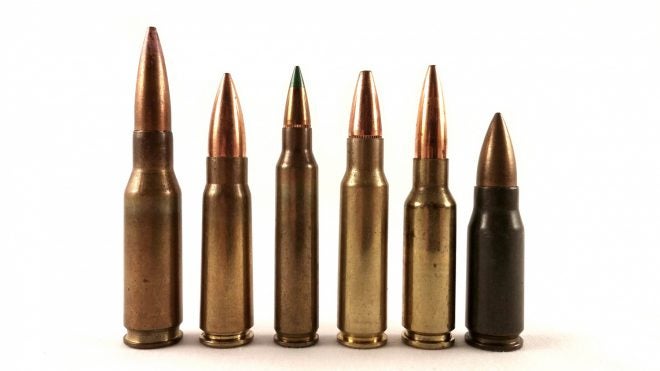Looking at the 24 different calibers we’ve covered as part of the Modern Intermediate Calibers series, some patterns begin to emerge. We see that larger rounds with heavier bullets weigh more, and have more recoil, that more slender bullets shoot further for their weight than other comparable projectiles, and that higher velocity rounds shoot flatter. Each of these patterns corresponds to a trade-off, however, as in some way each “improvement” in performance sacrifices good characteristics elsewhere. Sometimes, these trade-offs are obvious, but sometimes they aren’t.
Moving from real rounds that can actually be found in stores and at auctions to the theoretical and abstract, I want to take a look at what some of these trade-offs are, and how they affect the design of small arms ammunition today. Each post in the series will be brief, giving a short explanation of the trade-off being explored, as well as a corresponding analysis.

This image shows some of the characteristics of 7.62×39 that aid the reliable function of small arms ammunition. However, each one of these characteristics involves a trade-off that may negatively affect the ammunition or the rifle firing it in some way. How these trade-offs are balanced is an important part of small arms ammunition design.
There are some things we won’t be talking about in this series, such as propellant and primer selection, crimp type and strength, etc. These things are important, of course, but for the purposes of this article we will only be considering trade-offs in the basic characteristics of a type of ammunition, such as projectile weight, case length, capacity, taper etc.
The goal of this series is to help our readers reach a point where they have a working vocabulary of the fundamentals of small arms ammunition design, and understand the trade-offs created by changing one aspect of the ammunition’s design, or another.
One unfortunate limitation of this series is that it only will deal with classic metallic-cased centerfire ammunition, with a focus on intermediate rounds. Some of the principles covered here therefore will not be applicable to next-generation polymer cased or caseless ammunition, as the trade-offs for those kinds of ammunition will likely be different!
Our first stop in exploring the trade-offs inherent to ammunition design? Stay tuned, as we talk about caliber selection.
 Your Privacy Choices
Your Privacy Choices
